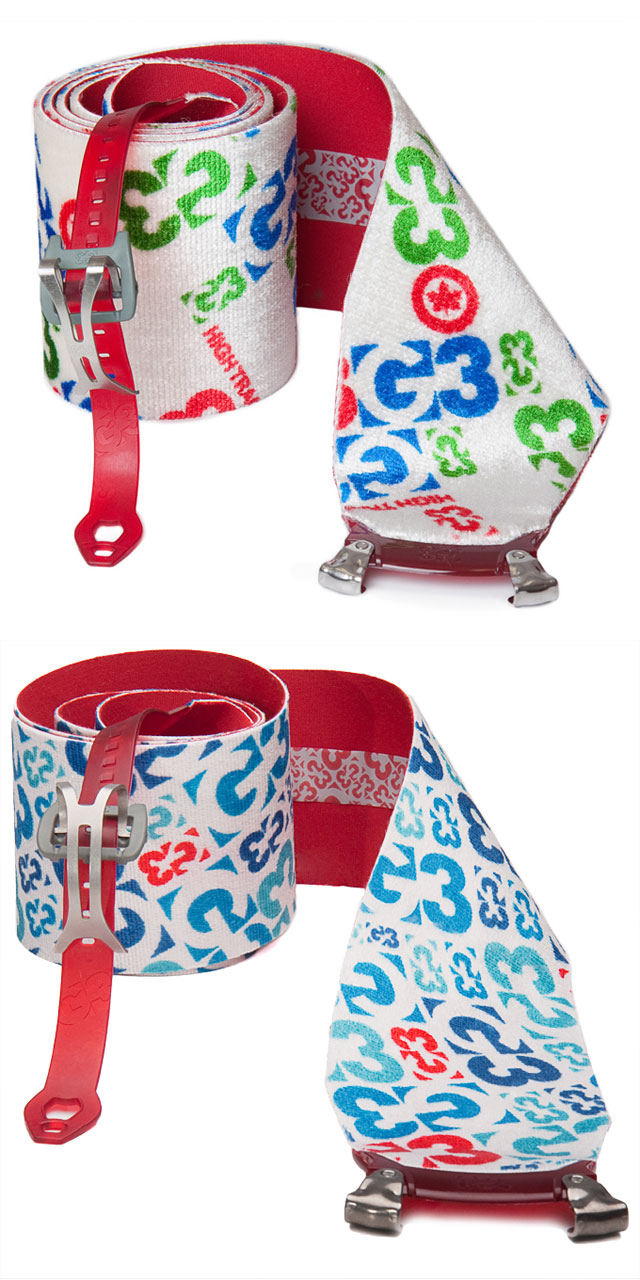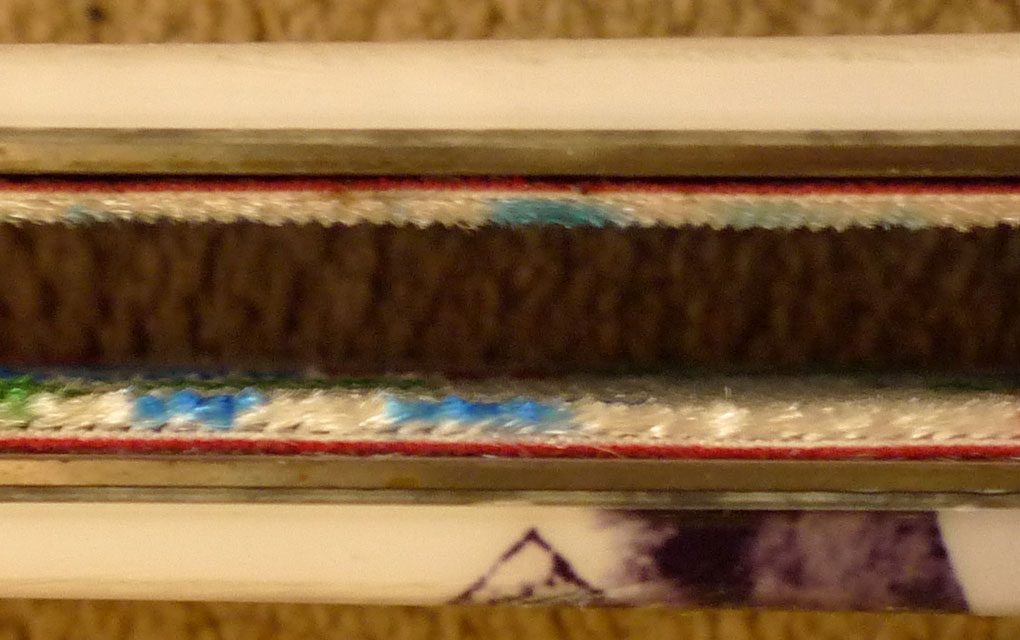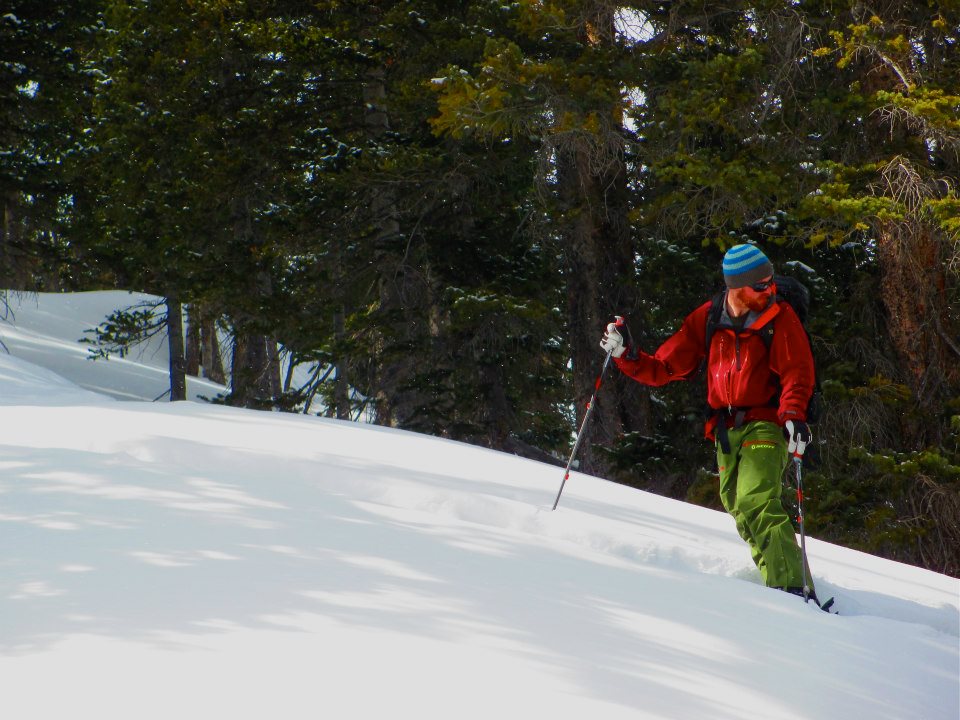 G3 Alpinist vs. G3 Alpinist High Traction Climbing skins
G3 Alpinist vs. G3 Alpinist High Traction Climbing skins
Size:
• Alpinist: Extra Long
• High Traction Alpinist: Long
Ski / Boots / Binding: Salomon Rocker2 115 / Black Diamond Factor 130 / Solomon Guardian
Test Location: Alaska and Colorado Backcountry
Days Skied: Alpinist Skins: ~80, High Traction Skins: 6
Material: 100% nylon
MSRP:
• Alpinist: $145
• High Traction Alpinist: $153
After using the G3 Alpinist skins for four seasons, on four different pairs of skis and with several different touring bindings, I recently got a pair of the Alpinist High Traction skins. The two have the same basic design, but the High Traction has longer hairs intended to increase grip.
In order to compare them, I alternated between the two while touring for several weeks earlier this winter. I wanted to figure out (1) how much the High Traction’s design improved grip and (2) since grip is usually inversely related to glide, see how much of a compromise there would be on that front.
Climbing Skin Materials: Nylon vs. Mohair
Climbing skin manufacturers have to pull off the difficult task of creating skins with an optimal ratio of grip to glide. One thing that affects these two characteristics is the composition of the plush fabric sticking out of the backing of the skin that enables you to climb uphill.
Nylon and mohair are the most common materials used for the plush fabric of climbing skins, and both have different characteristics: generally, nylon grips better and is more durable while mohair provides superior glide. Many top-shelf skins sport a blend of nylon and mohair, combining their characteristics, but the durability, better grip, and lower cost of nylon have made it a popular skin choice.
Grip vs. Glide
G3 Alpinist
The Alpinist, G3’s best-selling skin, is a 100% nylon skin that glides well right out of the box. This makes them great for longer tours; long, flat spots; and downhill sections. Like most skins, the Alpinist has also broken in over time, and the glide has improved.
The Alpinist skins grip pretty well, too. But I haven’t found them to offer as much grip as some other 100% nylon skins out there, like the Black Diamond Ascension Nylon STS. On several occasions when I was using the Alpinist and my touring partner was using Ascension skins, I struggled up a particular section of the skin track, while my partner cruised up the same section. And I’ve found that like I am more likely to slip out when using the Alpinist compared to the Ascensions in similar terrain.
For the most part, however, with good form, you can easily climb up relatively steep skin tracks on the Alpinist. But G3 recognized that there was a need to offer a skin with more grip than the Alpinist, so they designed the Alpinist High Traction.
G3 Alpinist High Traction: Grip
G3 says on their website that, in general, the High Traction skins can increase traction by 10 – 20% on steep, hard pack surfaces. As far I know, there is no material difference between the standard and the High Traction versions. (G3’s website describes all their skins as “synthetic plush,” except for their MoMix climbing skin, which is a blend of 70% mohair and 30% nylon.) The difference lies in the length of the hairs: the High Traction has longer hairs, which provide added leverage and help the plush fabric dig deeper into the snow.
The first thing I noticed about the High Traction was just how long the hairs are: they look to be twice as long as those on the standard Alpinist. This makes the skin look and feel bulkier than the standard Alpinist.

The design of the High Traction definitely translates to added grip, and these skins were right at home on steep and faceted skin tracks, which can be terrifyingly slick.
One particularly nasty skin track I came across this winter was directly across the valley from the Lost Wonder Hut in Colorado’s Sawatch Range, which was home base for a group of 12 students, my co-leader, and I on a four-day skiing trip this February.
One morning, I was bringing up the rear of the group, helping those who were struggling to get a grip and get up the track. The High Traction provided enough grip not just to get up myself, but to help me support those who were struggling through the tricky sections. I could stay locked in place while offering people a pole or while stopping them from slipping backward.
While the High Traction skins were able to maintain good grip, they did not make me completely immune to slipping. But whatever slips I did have were brief and minor. In those instances, I have no doubt that I would have slipped much more with my standard Alpinists or with the Black Diamond Ascensions. Had I been using either of those skins, I don’t think that I would have been able to provide the same level of assistance to others.
G3 Alpinist High Traction: Glide
While the extra grip was great for steeper climbs, it wasn’t a plus on flatter terrain. Of course, I hadn’t expected the High Traction to glide nearly as well as my thoroughly broken in Alpinists, but the difference did surprise me.
The trail from the parking lot to Lost Wonder Hut was low-angle and did not require the use of heel risers. The group was prepared for five days at the hut, and our packs weren’t light. This is exactly the situation that I would have wanted my skins to glide well. Here, however, the skins stuck to the snow with every step; there was very little glide.

It was cold at the time (~10˚F), and the snow had the texture of Styrofoam, so I initially thought maybe the conditions were to blame. After several more days of touring, however, alternating between the Alpinist and the High Traction, I discovered that the added grip of the High Traction was coming at a much more significant loss in glide than I had anticipated.
We spent five days at Lost Wonder Hut, where access to most of the skiing requires a one-to-two-mile approach up a low-angle valley. The High Traction Alpinist was not the ideal tool for these approaches. With very little glide, there was a lot of wasted energy with each step. Only when I needed to raise my heel riser did I feel that the High Traction wasn’t hindering my forward motion.
Break-In Time
Eventually, however, the High Traction did break in a bit. After four days of alternating between skins, they got to the point where I didn’t mind using them with my heel riser down. The glide still wasn’t great, but it had gotten to the point where I felt like I wasn’t wasting excessive energy when using them on the flatter stretches.
What’s more, while I’ve so far used the High Traction skin for only six days, I’ve noticed that they seem to be breaking in quicker than my Alpinists did, and I suspect that with further use, they will continue to break in.
And you might try waxing the skins right out of the box to improve glide if you’re anticipating longer, flatter approaches to steeper terrain on your first tours.

Cutting these skins sure is a mess compared to the regular Alpinist skins.
I really appreciate your thorough review. I just bought my first pair of skins, prompted by a 75% discount. They are the G3 alpinist. When I got them home I thought they were missing the tailpieces, then I read on the box that they are tail less. Is it really OK to use them without a tail connector, or do I buy the connector separate and add it on myself? I don’t find any reference to using the tail less skins on the G3 website or anywhere else. Thank you
Hello: How would these compare to the BD Ascensions? I´ve used the BDs in the past. They were OK. I have to replace them now so I was checking out alternatives… Any advises? Should I go for the Alpinist? The High Tractions? Im quite a heavy dude (200lbs + gear).
Cheers.
Thanks for the review. Really helpful in deciding which one to get. I would not mind to know the weight difference but I will check the internet further as on line stores do not say either.
Appreciated.